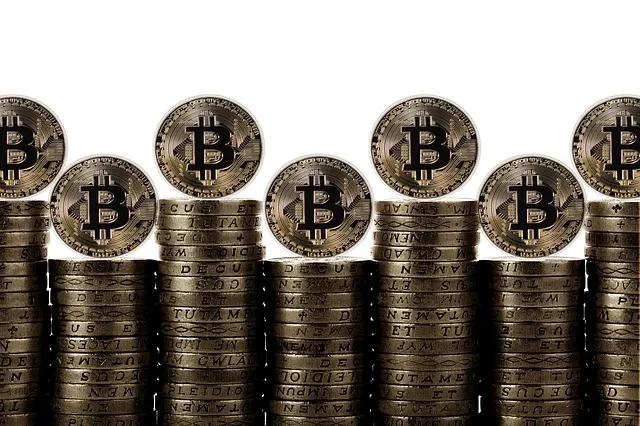How Did We End Up With Bitcoin Anyway? The financial crisis of 08

source
When the Federal Reserve began printing trillions of dollars in 2008 through to 2014, it was an extraordinary measure taken to prevent global economic collapse as there was a credit liquidity issue - which means there wasn't enough money inside the system to service debt, which had a snowball effect across financial institutions
Bank A, owed Bank B, who owed Bank C, who owed, Bank A - and somewhere in this long chain of debt to debt to debt, someone couldn't pay. This is how the solvency issue started and ultimately led to the collapse of several major financial institutions in the United States. It exposed a network of unserviceable debt, questionable practices and downright abuse of the worlds most renowned capitalist economy.
It was most certainly due to a lack of oversight and regulation. It was the result of greed, shills, and plain stupidity. One could argue the Federal Reserve abused the fractional reserve system, our current monetary system during the 2008 crisis (which actually began in 2007). However, had these extraordinary measures not been taken, a depression the likes of the 1920s through the 30's would have taken hold of the global economy. That means wheelbarrows of cash to buy bread, wealth disparity would have hit a new extreme.
If we break it down further, total annual GDP in the United States is approximately $18 trillion dollars. In 2014, when asset purchases had stopped, the federal reserve had accumulated a mere $4.5 trillion over 6 years. Small potatoes if we view things in percentage terms. The monetary cycle continues and the federal reserve has begun unwinding these assets as they increase interest rates to match inflation. They are doing so in a slow and controlled manner so as not to shock the financial system. It should be recognized that the Fed could even turn a profit as they liquidate the original $4.5 trillion in asset purchases. This money could be used for several things, including kept in reserve, servicing the national debt or economically stimulative initiatives.
As a function of GDP
4.5 trillion over 6 years = 750 billion.
4.5trill / 18trill / 6 years = 4% annually.
Is it possible the FED only increased the total money supply by 4% annually to stave off a financial calamity? Good on them.
Lets talk about bitcoin
Blockchain and Satoshi's Bitcoin were actually conceptualized in the 80s and 90s, however, the technology simply didn't exist to host a distributed ledger - and perhaps society hadn't reached the point of total disenfranchisement with the current monetary system. Around the same time as the 08 financial crisis, the world had gotten over the dot-com boom and bust, suddenly the technology existed to make blockchain and bitcoin work.
In the years following the financial crisis, a movement known as, "The 99%", paralleled the Federal Reserves Quantitative easing program. Suddenly there was a demand for an alternative to the current system. Satoshi made bitcoin, distributed ledger technology was implemented and when bitcoin started, it was viewed as a joke, used for online gambling and generally not wildly known or understood. It just percolated in chat rooms and forums on the internet.
Suddenly, overnight millionaires were born as the adoption spread like a wildfire. The craze began and here we are today with a cryptocurrency market inspired by Satoshi's bitcoin with over 1000 tokens to choose from. Interestingly, the original allure of Bitcoin was limited supply and suddenly supply is unlimited in the broadest sense. A guy in his garage, a girl in her basement, or some 'dude' in some far off place can make a coin, make a blockchain - or at least they could run token sales for it (Ponzi coins are a discussion for another day).
Blockchain technology has grown rapidly and has been adopted into the real world, by the likes of mega-corporations, specifically IBM and some major financial institutions with Bank of America now having over 30 patents on the technology. It is important to recognize, first came blockchain, then came bitcoin. Going forward one should expect this reality to become more and more present. Cryptocurrency fundamentals will depend heavily on the strength of their networks and the underlying technology they are to power.
Bitcoin, for example, is purely transactional, Ethereum introduced the smart contract - the evolution of technology is natural and should be embraced which presents an interesting issue as technology tends to become obsolete. In the internet age, this age of science, we don't 'Macgyver" we build new, we make better, continuously improve and the rate this occurs is seemingly exponential.
"Fork it!" They say...
Blockchain forks are opportunities to update the codebase to accommodate the evolution of a distributed ledger and/or coin -- or they are abused and coin after coin gets made.
This is one of a few fundamental issues facing cryptocurrency markets. If total supply of bitcoin was only ever intended to be 21 million, but with a hard fork a bitcoin derivative is created, total supply increases in a roundabout manner and effectively increasing by 100% each time - let's ignore market cap for now as bitcoins appeared overnight and could just as easily disappear overnight.
BTC = 21 million
BCH = 21million
BTG = 21 million
etc etc.
So the real questions ... ?
How are hard forks better than the fractional reserve system?
Is supply truly limited?
What constitutes decentralized? Is true decentralization even possible?
Is Bitcoin decentralized if the top miners get to decide what happens and not the community of holders?
What happens when the regulators truly take action?
Is it possible that the true purpose and value was lost in the capitalist growth of the crypto market?
How do we determine intrinsic value? Silver has intrinsic value... does bitcoin?

source
Crypto community members need to start asking these question. Greed is blinding and that is why we now have over 1000 coins to choose from. Some have great technology, some are simply ponzi schemes. Others might have a fantastic use case or technology, does that mean they should be a cryptocurrency?
Let us know what you think in the comments, and let's explore these questions in Part 2.


